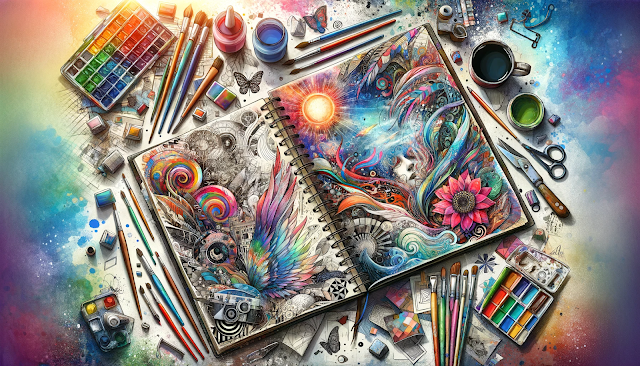The History of Journaling.
The history of journaling is rich and varied, tracing back thousands of years. It has evolved significantly over time, from simple record-keeping to a complex form of personal expression. Here's a detailed look at its history:
Ancient Origins
Early Record-Keeping (circa 4th millennium BC): The earliest forms of journaling can be traced back to ancient civilizations in Mesopotamia, Egypt, and China, where people recorded daily events, transactions, and observations on clay tablets and papyrus. This was primarily for practical record-keeping rather than personal reflection.
The Romans (1st century AD): The Roman Emperor Marcus Aurelius's "Meditations," written in Greek while on campaign, is an early example of a journal as a series of personal reflections. It's considered one of the earliest forms of introspective diary-keeping.
Middle Ages
Monastic Chronicles (5th-15th century): During the Middle Ages in Europe, monks and other religious figures maintained chronicles and annals, recording events of the monastery and sometimes their personal thoughts. These were often written in Latin and focused on religious and communal life.
Travel Journals: Travel journaling became prominent, with explorers and pilgrims documenting their journeys. These journals were invaluable for sharing information about distant lands, cultures, and experiences.
Renaissance to Enlightenment
Personal Diaries (16th-18th century): The Renaissance sparked greater introspection and individualism. People began keeping personal diaries, reflecting on their daily life, thoughts, and feelings. Samuel Pepys's diary (1660-1669) is a famous example, offering a detailed first-hand account of significant events in 17th-century England, including the Great Fire of London.
Literary and Philosophical Journals: The Enlightenment era saw the rise of journals used for philosophical reasoning and literary creation. Intellectuals and writers used journals to develop ideas and write drafts for their works.
19th Century
Victorian Diaries: In the 19th century, with increased literacy and the availability of paper, journaling became more common among the general population. It was especially popular among women, who often used journals to document their daily lives, personal feelings, and social observations.
Specialized Journals: The 19th century also saw the emergence of specialized journals for areas like science, exploration, and art, where professionals and hobbyists documented their findings and creations.
20th Century to Present
Rise of Mass Production: The 20th century introduced mass-produced journals, making them accessible to a broader population. The practice of journaling expanded dramatically, with people using journals for various purposes, including as diaries, bullet journals, and self-help tools.
Digital Era: The late 20th and early 21st centuries have seen the digitalization of journaling. Digital journals, blogs, and social media platforms now offer new ways to journal and share personal experiences with a global audience.
Therapeutic Use: Modern psychology has recognized the benefits of journaling for mental health. It is often recommended as a therapeutic tool for self-expression, self-reflection, and dealing with emotions.
Creative and Cultural Renaissance: In recent years, there's been a resurgence of interest in traditional paper-based journaling, seen as a creative and mindful counterpoint to the digital life. This has been accompanied by a rise in artistic journaling styles like bullet journaling, scrapbooking, and art journaling.
Throughout its history, journaling has continually adapted to cultural, technological, and societal changes. From a means of record-keeping to a tool for personal exploration and creativity, journaling has maintained its relevance and importance in human history.





Comments
Post a Comment